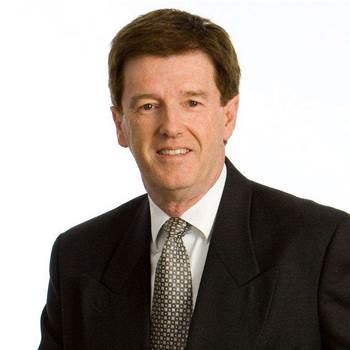The Australian Tax Office’s long-serving chief information officer Bill Gibson will work the last day of an 11 year tenure at the agency next Friday after handing in his resignation.
Gibson first joined the ATO as its CIO on November 2, 2003, making it just over 11 years to the day he will have spent leading one of Australia's largest IT operations.
He joined the organisation after 15 years at Qantas in various technology roles, during which time he witnessed the airline moved from a government-entity and into a commercial body.
Arriving at the ATO, Gibson found an IT team that was - while professional and committed - very inward-looking and concerned about being taking for granted.
“The value of what the technology teams and the technology itself could do in terms of driving business value wasn’t well communicated. So the first step - they say you need to focus on processes, people and technology - was the people,” Gibson told iTnews.
He embarked on a 15-month effort to not only boost the confidence levels of the 900 people working for IT at the time, but also change how the work was done.
Groups of 20 IT staff were taken out to “breaky with Bill” (a coffee and a doughnut, usually) and encouraged to speak their minds about things they were concerned about or thought could improve, while learning about the background and values of their new boss.
“That was the beginning of me saying to them that we needed to operate differently - saying ‘trust me, I’m human and I’m here to try and support you, and you should feel free to speak your mind’”, he said.
“It was about creating that ‘safe’ environment where people felt they could speak up about things that were not right. I came from the perspective [from Qantas] that if something is not right, speak up about it, because then we are aware and we can fix it.”
Once that cultural change had been enacted, towards the end of 2004 the IT team launched itself into a business and systems transformation drive which the ATO termed the “change program”. The goal was to integrate a number of fundamental core processing systems that had been developed separately from each other.
“We realised we needed to get out backend systems in order so we could then do something more exciting with the frontend systems,” Gibson said.
“That particular transformation program drove that integration and a huge amount of what we have today and the platforms that we are building on today is a consequence of that five or six year program.”
That backend overhaul allowed Gibson and his team to embark on stage two of the CIO’s vision - leveraging the technologies to create modern frontend and customer-facing systems, such as the ATO’s mobile app and MyTax online tax return portal.
“These things have become more visible in the last two years,” Gibson said.
“In April last year I went to the commissioner and showed him a [prototype] mobile app and he was delighted. And then in six weeks we delivered the first ATO mobile app.
“We started small and we have incrementally built on that in the last 18 months so it has evolved, and in January there will be another version of it which will be even better than the one we’ve got at the moment.”
The overhaul of the ATO’s core processing systems has also opened up opportunities in digital services.
Gibson recently pulled together a team of 50 staff out of the 1800-strong IT division into what he calls a “digital services factory”, which focuses on developing digital services to provide to external consumers that require tax administration processing services.
Services such as registering an individual for tax, verifying details, making payments or issuing an assessment will be created as APIs to be used by software developers or other third-parties.
The team on this project is the only group within the organisation to work using the agile and lean software development methodologies - something Gibson said represented a major change in the IT division’s thinking.
“The development methodologies we are using are not the classic waterfall, they are agile and lean, and that is a really big change for us. [It’s] mindblowing in terms of two years ago - we wouldn’t have thought that way.”
The core system overhaul and the change in culture within the IT team are Gibson’s two proudest achievements during his 11-year tenure - and he is happy now to hand over to someone new to build their own legacy.
No single factor contributed to his decision to resign - he simply decided it was time for a change, and for someone else to have the opportunity to take over.
He’s planning to spend the next two months travelling, and feels confident he has left the organisation in a good position.
“There are a lot of challenges ahead of us, but there’s no huge crisis that is all-consuming. I can leave knowing that the future is looking really good for the Office,” he said.
“I think its engagement with its end-users and the community is really positive, and some of the technology things that we are doing and have done in support of that are quite robust and well-established.”
Gibson will “chill for a bit” once he returns from his travel in January, and will then start looking for a new role. He is keen to work in another technology leadership position in a mid-to-large organisation for another four years, but “not much longer than that”.
“There’s still plenty you can either achieve or make mistakes with in three to four years,” he said.
He also offered advice for whoever will be named his successor at the ATO:
“Don’t just think about how things are going to be over the next year or 18 months, think about it in order to effect transformational change,” he said.
“I’m very passionate about ensuring there is the correct amount of tension between continuous improvement and step change. If you’re only ever doing continuous improvement without a view to a major future endpoint, you won’t get step change.
“My other advice to my successor is you’ve got a very good, capable and committed team - continue to use them and trust them.”
Deputy Commissioner of the ATO's workforce adjustment project Jane King will act in the CIO role until a permanent CIO is recruited midway through next year.





.jpg&h=140&w=231&c=1&s=0)




















